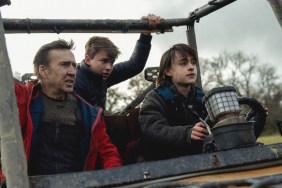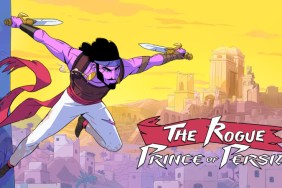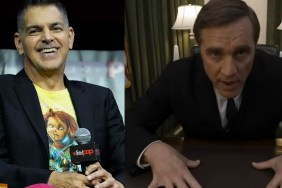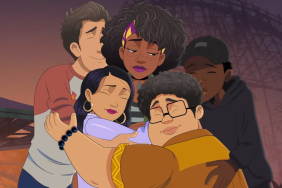Creative partners for roughly two decades, Jeremy Bolt’s connection to Paul W.S. Anderson goes back as far as 1994’s Shopping, which Anderson wrote and directed and Bolt produced. Since then, they’ve teamed on quite a number of projects, ranging from Event Horizon to every film in the “Resident Evil” franchise.
October 21st sees the release of their The Three Musketeers, which offers an action-packed 3D take on Alexandre Dumas’ classic adventure tale. Bolt and Anderson re-team with Milla Jovovich (Anderson’s wife) and showcase a cast that includes Logan Lerman, Matthew Macfadyen, Ray Stevenson, Luke Evans, Mads Mikkelsen, Gabriella Wilde, Juno Temple, Orlando Bloom and Christoph Waltz.
ComingSoon.net spoke with Bolt about the film, the challenges of adapting classic literature and his next two projects, Resident Evil: Retribution and the 3D disaster movie, Pompeii. Be sure to check back next week as well for video interviews with Anderson and the cast of The Three Musketeers.
CS: I hear the idea to adapt “The Three Musketeers” was actually your own.
Bolt: Yes! I was in Berlin on post-production with Paul [Anderson] on our movie, “Pandorum.” We were walking back from the cutting room one night and appreciating the phenomenal buildings of Berlin. All the old architecture. Paul said that we should really try and find a project where we could shoot some of these building for real. I sort of started thinking through period pieces and, by pure chance, I was in the gym the following morning and the Dick Lester version of “Three Musketeers” was on with Oliver Reed, who is one of my very favorite actors. It’s a movie that Paul and I have spoken about many times over the years and, after those years, it just sort of clicked. I pitched it to him and he loved it. He always loved that movie and it was the perfect way to use this brilliant sort of period architecture in Europe. Then we pitched it to Constantin, our partners, and they loved it. Then it all came together incredibly quickly. It’s been about exactly two-and-a-half years since the original idea.
CS: The Richard Lester version is one that seems to have stuck for a lot of people, but there have been so many different takes on the original book. What did you know from the start that you’d want to change to make your version distinct?
Bolt: I think the Richard Lester version had a kind of ’70s sexual innuendo that would not work for a contemporary family audience, which was very much how we saw the movie. We also knew that we had to up the action component considerably. We also thought that, generally, the casting should be a bit younger, especially in the case of D’Artagnan, who is only 18 in the book. But the biggest thing we had to come up with was this: we know “Three Musketeers” is a big brand, but why would people want to go see it again? The 1993 version was sold very much on the “Young Guns” of Kiefer Sutherland, Charlie Sheen and Chris O’Donnell. We had to come up with a hook. That came about in the formulating the idea of the airships. We felt that that was a clear image in our material that would make people realize that this version wasn’t like any other version of “The Three Musketeers.”
CS: Who came up with the idea to add that element?
Bolt: They came about through the script process with our writer, Alex Litvak. I don’t know who actually came up with it. It was one of those things that just occurred. Paul is such a strong visualist and already in the script process we had a lot of gadgets. So it kind of came from that. We were thinking, “If these guys had kind of James Bond-type gadgets, what would they have?” It came from that idea. What often happens with that is that Paul often has the inspiration for such things and he’s very good at pulling ideas from his team.

CS: Paul is certainly no stranger to action scenes and this is a property that gets to play that up to the extreme. As a producer, is that ever troublesome? Do you have to rein it in and say that it needs to be toned down for either budget or storytelling reasons?
Bolt: Absolutely. All the time. Paul has a huge appetite and I spend a great deal of my time brokering the appetite and the need for visually stunning sequences with the restrictions the studio gives us as far as budget. So my job is to manage his appetite. But Paul will always go big. Ever since we started out on this journey together, he’s always liked scale. More is more. So what we do is try to find the sequences where more is really more and the ones where we can do with less. Really, you don’t want to spread yourself too thin. When you’ve got a limited budget, you’ve got to select the sequences to put your money into.
CS: It’s an interesting dynamic having Paul and Milla Jovovich working together as husband and wife. I know they’ve joked about the creative process of talking about ideas over the breakfast table. You’ve been working with Paul for twenty years and are a close friend. What is the discussion like between the three of you?
Bolt: It’s very good. Oftentimes ideas may originate with discussions that Paul and I have and inevitably he talks to her about scenes that involve her. Then I’ll have conversations with my partners at Constantin. It’s a very healthy creative relationship. It’s an unusual situation in that his wife is often the lead in his films, but it works very well. Paul and I have been friends for such a long time and know each other so well. There’s a very strong foundation to our partnership that lets me appreciate that he essentially has a partner in his wife as well. I’ve always approached film as incredibly collaborative. Ideas come from everywhere. I think an important part of being a producer is walking into a situation and asking yourself, “How can I get the best out of everybody in this room?” It’s not about, “How can I look the best?” or “How can I dominate?” It’s about making the best of everybody’s brain and every piece of creative energy in the room and get it onto the screen within the money that the studio has given me. For me, knowing that Paul’s wife is the star of a lot of our movies, how do I make sure that that energy goes into the right place? So far, we’ve been pretty successful at it.
CS: Tell me the difference between having a piece of source material with this and something like a video game like “Resident Evil.”
Bolt: It’s a challenge in that we have to ground it to some extent in two pieces of reality. First, in historical reality and, second, against a very well-structured novel. With a video game, there’s often very little story and you’re quite often in a science fiction world, which lets you construct your own reality. We needed to make this visually exciting but, at the same time, ground it to some extent. That was a challenge. We managed it, really, by trying to film as often as possible in real locations. The fact of the architecture stares you in the face and you can only do so much. One of the great coincidences of “Three Musketeers” was finding that a lot of castles in Bavaria were inspired by the French kings. We could film there without having to try and film in France and, specifically, Paris, which is incredibly difficult and expensive to film in.
CS: How much more work as a producer is it to step off a soundstage and have to round up permits and insurance for practical locations?
Bolt: Oh, it’s a massive, massive amount of work. Much more work. Location shooting is very, very difficult because of the interaction with the public. They oftentimes don’t really care and why should they? It’s at least 50 percent harder. The biggest problem for a producer is, let’s say you go on location to save money. You’re not building sets or doing effects. But, if something goes wrong, you still need to do that and then you’ve really screwed up. You’ve got to make the most of a location and that means quick thinking. There was one part where we were shooting on a bridge in this beautiful old city of Bamberg. We didn’t have quite enough room for our 3D equipment and we were literally pushing into this restaurant. It was the height of summer and there were a lot of tourists. I had to just walk into the restaurant and buy them out for the day. By the way, it’s kind of exciting to be in that kind of position as a producer and getting to think on your feet like that. I think studio filmmaking can get a little too relaxed sometimes. Sometimes you need to get out of your comfort zone and out into the streets. Certainly coming from low-budget filmmaking in Europe, that’s how we used to make films in the early days. There was a great sense of adventure and excitement because every day was an unexpected problem.

CS: Of course, this isn’t your first time working with 3D. How is the technology progressing? What has changed since the last “Resident Evil”?
Bolt: Cameras are getting smaller. We’re about to start shooting this new “Resident Evil” and we’re using the RED EPIC camera. It’s about 50 percent smaller than the Sony F35s that we used on “Resident Evil 4” or even the ARRI Alexa that we used on “Three Musketeers.” What that means is that there are certain camera rigs that you can make for 3D that you couldn’t do before. It was just impossible. Steadicam in 3D is going to become easier. Basically, the cameras are becoming closer and closer to 2D and what you can do with them. It’s all about ease of moment.
CS: What is getting you excited about tackling another “Resident Evil”?
Bolt: Just to be better than the last one. To keep fans engaged and to expand the audience. We’ve got new characters coming from the game. We’re doing some really interesting plot twists. We’ve got characters returning from earlier versions of the film. You know, a franchise is a great thing to have as a filmmaker. It’s obviously the mother-load in a number of ways. But the danger is that you run the risk of resting on your laurels. Paul and I constantly try to push forward and keep every version better than the last. Every “Resident Evil” film has done significantly better than the last one and I think that comes from trying to give people a new experience each time. It goes back to the first “Resident Evil” where we actually introduced an entirely new character with Alice. She doesn’t exist in the games. If you just do a simple adaptation, it’s kind of a cheat. You need to enhance and give added value to the fans.
CS: It seems like there’s a massive number of cast members returning this time around. Is the goal to bring back everyone from the entire franchise?
Bolt: Almost, yeah. It’s fun. Michelle Rodriguez is coming back. Colin Salmon is coming back from the first one. Sienna Guillory is coming back. There’s also a lot of new characters. We’ve got a brilliant young actor, Johann Urb, who’s playing Leon from the game. But like I said, the challenge is to just keep pushing the envelope.
CS: You and Paul were also supposed to team up for “Pompeii.” Is that still happening?
Bolt: There is a plan to make that next year, yeah. We’re still working on that. It’s a 3D action disaster movie.
CS: Do you think that 3D is something that’s here to stay, at least as far as your career goes?
Bolt: Yes, absolutely. We just want to keep making better and better films. Each time we try to do better and, as far as we’re concerned, we’ve entered the 3D world and, as long as it makes economic sense, we’ll keep doing it.
The Three Musketeers hits 3D and 2D theaters on October 21.
(Photo Credit: Lia Toby / WENN.com)









